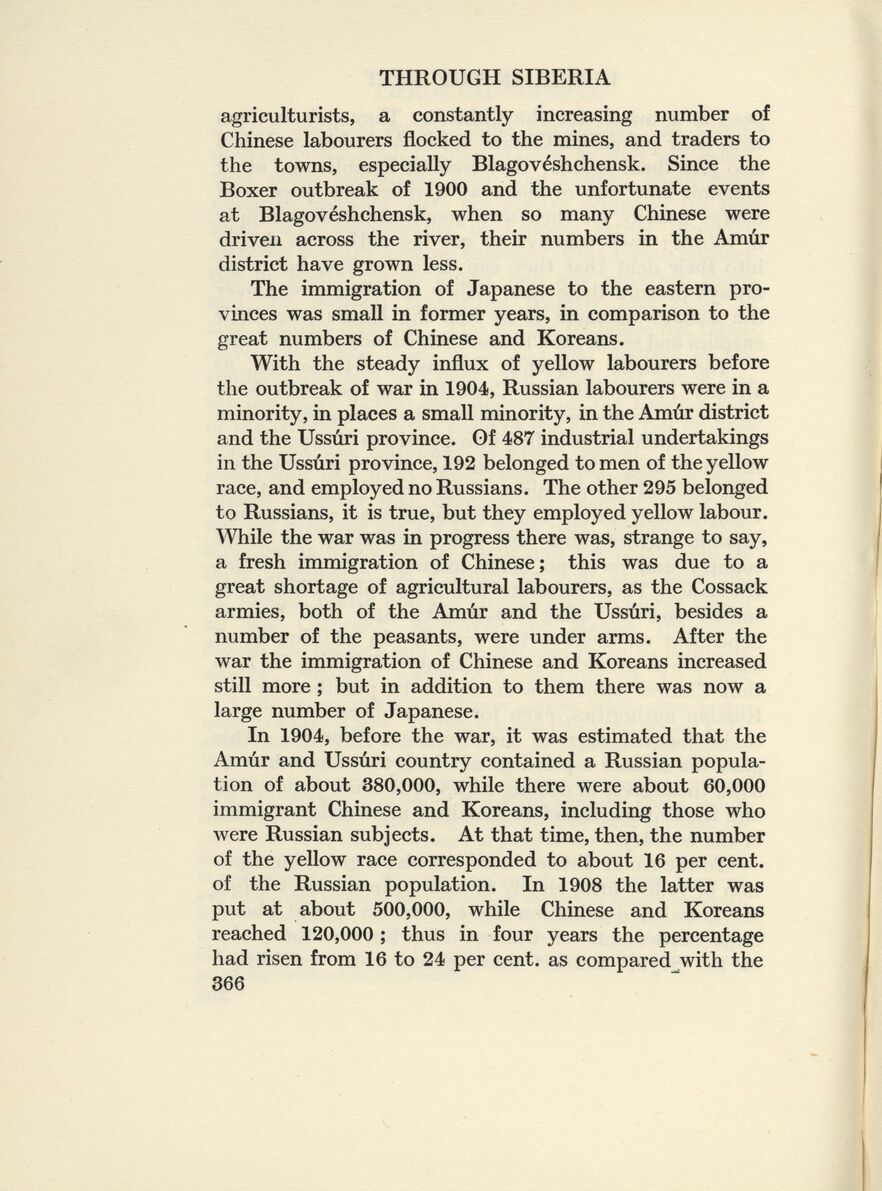
Full resolution (JPEG) - On this page / på denna sida - XVI. Russia in the east. The yellow question

<< prev. page << föreg. sida << >> nästa sida >> next page >>
Below is the raw OCR text
from the above scanned image.
Do you see an error? Proofread the page now!
Här nedan syns maskintolkade texten från faksimilbilden ovan.
Ser du något fel? Korrekturläs sidan nu!
This page has never been proofread. / Denna sida har aldrig korrekturlästs.
THROUGH SIBERIA
agriculturists, a constantly increasing number of
Chinese labourers flocked to the mines, and traders to
the towns, especially Blagovéshchensk. Since the
Boxer outbreak of 1900 and the unfortunate events
at Blagovéshchensk, when so many Chinese were
driven across the river, their numbers in the Amiir
district have grown less.
The immigration of Japanese to the eastern pro
vinces was small in former years, in comparison to the
great numbers of Chinese and Koreans.
With the steady influx of yellow labourers before
the outbreak of war in 1904, Russian labourers were in a
minority, in places a small minority, in the Amiir district
and the Ussuri province. Of 487 industrial undertakings
in the Ussuri province, 192 belonged tomen of the yellow
race, and employed no Russians. The other 295 belonged
to Russians, it is true, but they employed yellow labour.
While the war was in progress there was, strange to say,
a fresh immigration of Chinese; this was due to a
great shortage of agricultural labourers, as the Cossack
armies, both of the Amiir and the Ussuri, besides a
number of the peasants, were under arms. After the
war the immigration of Chinese and Koreans increased
still more ; but in addition to them there was now a
large number of Japanese.
In 1904, before the war, it was estimated that the
Amiir and Ussuri country contained a Russian popula-
tion of about 380,000, while there were about 60,000
immigrant Chinese and Koreans, including those who
were Russian subjects. At that time, then, the number
of the yellow race corresponded to about 16 per cent.
of the Russian population. In 1908 the latter was
put at about 500,000, while Chinese and Koreans
reached 120,000 ; thus in four years the percentage
had risen from 16 to 24 per cent. as compared with the
366
<< prev. page << föreg. sida << >> nästa sida >> next page >>